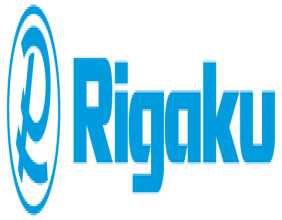Highlights:
- Dollar bonds refer to municipal revenue bonds quoted in dollar prices.
- They are not to be confused with "US Dollar" bonds in the Eurobond market.
- These bonds are a specific type of municipal debt instrument used in local financing.
In the world of finance, bonds come in many varieties, each serving distinct purposes. Among these, dollar bonds are a particular type of municipal revenue bond. Unlike typical bonds that are priced based on a percentage of par value, dollar bonds are quoted in terms of actual dollar prices, providing a clearer representation of their current market value.
What Are Dollar Bonds?
Dollar bonds are a type of municipal revenue bond where the bond’s price is quoted in actual dollar amounts rather than as a percentage of its face value. This pricing method is common for municipal revenue bonds, which are issued by local governments or their agencies to fund specific public projects or services. These bonds differ from other types of municipal bonds because they offer investors a more direct way to assess the value of the bond in the market.
Municipal revenue bonds are generally issued to finance public infrastructure or services, such as transportation systems, utilities, and schools. The funds raised from these bonds are repaid through the revenue generated by the specific project they were issued to finance. Dollar bonds are just one form of municipal bond in the marketplace, but their pricing method makes them distinct.
How Dollar Bonds Work
The distinguishing feature of dollar bonds lies in how their prices are quoted. While traditional bonds may be quoted as a percentage of their par value, dollar bonds are quoted in actual dollar amounts. For example, if a municipal revenue bond has a par value of $1,000 and is quoted at 102, its price would be $1,020. However, with dollar bonds, the market value is directly stated in terms of the current dollar price, allowing for a more straightforward understanding of its cost.
The market for dollar bonds is typically made up of institutional investors, such as banks and large investment firms, as well as individual investors seeking to invest in specific municipal projects. These bonds are typically traded in secondary markets, where the price can fluctuate based on interest rates, economic conditions, and the revenue performance of the underlying projects.
Dollar Bonds vs. "US Dollar" Bonds
It’s important not to confuse dollar bonds with another type of bond often referred to in global markets: the "US Dollar" bonds. While dollar bonds pertain to municipal revenue bonds quoted in dollar prices, "US Dollar" bonds refer to bonds issued by foreign entities that are denominated in US dollars. These bonds are commonly traded in the Eurobond market and are issued by governments, corporations, or other institutions outside the United States but use the US dollar as their denomination currency.
Despite the shared term "dollar," these two bond types serve different purposes and are traded in different markets. Dollar bonds are tied to specific municipal projects, whereas "US Dollar" bonds are part of a broader global bond market involving international entities.
Why Investors Buy Dollar Bonds
Investors are attracted to dollar bonds for several reasons. First, because these bonds are tied to municipal revenue, they can provide a reliable stream of income, especially if the project is well-managed and generates consistent revenue. Additionally, the bond's pricing method in actual dollar amounts offers clarity for investors when evaluating their portfolio.
Dollar bonds also offer some level of tax advantage, as many municipal bonds, including dollar bonds, are exempt from federal taxes, and sometimes state or local taxes, depending on the bond’s location. This makes them an appealing investment option for individuals in higher tax brackets.
Risks and Considerations
As with any investment, dollar bonds come with risks. Since they are tied to specific revenue-generating projects, the financial health and success of the project will directly impact the bond’s performance. If the revenue from the project underperforms or fails to meet expectations, the bond’s value could decline. Additionally, while municipal bonds are generally considered safe, investors should still evaluate the creditworthiness of the issuing municipality.
Market conditions can also affect dollar bonds, as interest rate fluctuations can cause their prices to fluctuate. A rising interest rate environment may lead to lower bond prices, making it essential for investors to monitor these external factors when investing in dollar bonds.
Conclusion
Dollar bonds are a distinct type of municipal revenue bond quoted in dollar amounts, offering investors a transparent way to assess their value. While they are similar in nature to other municipal bonds, the use of dollar prices differentiates them from other instruments in the bond market. It’s essential to understand the distinction between dollar bonds and "US Dollar" bonds, as they serve different functions in separate markets. With their potential tax advantages and relatively stable income stream, dollar bonds can be an appealing investment for those interested in supporting municipal projects, though investors must remain mindful of the risks involved.




